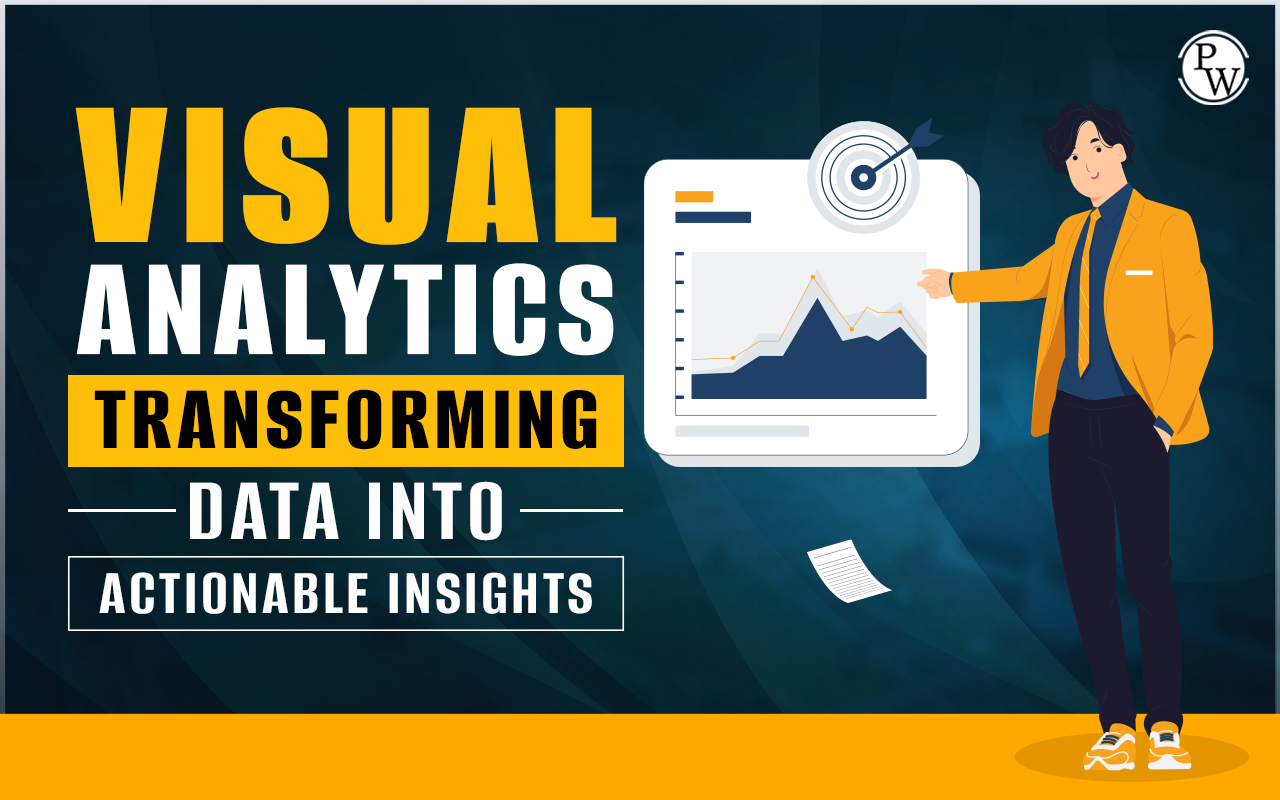Visual analytics is a process of converting complex data into easy-to-understand and actionable insights. Learn more about visual analysis and tools used to visualize data in this article.
Visual Analytics: Some data analytical tools can convert data into insightful graphs and charts. The process of representing the data visually is called visual analytics. When the data is represented visually, it is easier to understand for everyone. Through this article, you will learn how visual analytics transforms data into actionable insights.

What is Visual Analytics?
When sophisticated tools analyse datasets and convert them into maps, charts, graphs, and other graphical forms, it is known as visual analytics. These visual elements make it easier to recognize the underlying patterns and customer sentiments in the data. So, developing actionable insights becomes easier with the help of these tools.
Benefits of Visual Analytics
Some of the key benefits of visual analysis have been explained below:
- Sharing insights: When data is represented graphically, it becomes understandable for all. So, sharing data that reflects the key performance indicators of your organization becomes easier.
- Expediting decision-making: Graphical representation allows you to analyse the patterns and trends quickly. So, it saves your time and enables you to make faster decisions.
- Easy exploration: Visual representation helps you uncover hidden relationships between data variables. It makes pattern recognition easier, and you don’t need experts to explain their meanings.
- Encourages data literacy: Visual representation of data draws more attention from the stakeholders. It encourages your teammates to make data-driven decisions and promotes data literacy.
Also read: Data Visualization in Data Science: Types, Tools, Best Practices
Best Practices in Visual Analytics
To be a successful visual analyser, we have curated this list of best visual analytics practices:
-
Set Goals
Before using tools for visualizing data, ensure that you are well aware of your goals related to visual analytics. Be sure of the questions that you want the graphs and charts to answer. It will help you choose the tools and data metrics easily.
-
Data integration and merger
Collect data from various sources and store them in standard format in a data warehouse or repository. The data needs to be cleaned and missing elements must be added to make it complete and ready for processing.
-
Use visualization techniques
Once the data is ready, use data visualization techniques to present the data graphically. Try to convey a visual story through maps, graphs, charts, and other visual elements.
Recommended Technical Course
- Full Stack Web Development Course
- Generative AI Course
- DSA C++ Course
- Java+DSA 1.0 Course
- Data Analytics Course
- Data Science with ML 1.0 Course
What is a Visual Analytics Software?
A visual analytics software contains multiple visualization tools and features. There are many visual analysis software in the market. Yet, you can consider these factors while determining the best software as per your requirements:
-
Data integration
The best visual analytics software can integrate data from various sources without any issues. It increases the credibility of the data and gives you a complete view of the situation.
-
Flexible
The data visualization software you use must allow you to explore data freely. This gives more flexibility and enables you to visualize data as per your requirements.
-
AI recommendations
The tools you use must provide recommendations based on AR (Augmented Reality) and AI (Artificial Intelligence). It helps you create analytics even if you do not have any technical prowess. Discovering hidden insights from data becomes easier due to this.
-
Easy embedding
The visual analytics software should allow you to embed it easily into websites, apps, and other digital platforms.
Also read: 11 Data Analyst Skills You Need to Get Hired in 2024
Examples of Visual Analytics
Some of the popular examples of visual analytics are explained below:
- The HR department can use visual analysis to represent their employees based on gender, roles, training progress, and other KPIs.
- Finance companies can use visual analytics to check how different branches perform along with the performance of their managers in the specific branches.
- IT companies can use visualization to analyse upcoming disruptions in the technological space.
- Marketing firms can leverage data from web, social media, and advertising tools to check the performance of different digital platforms over time.
- Sales teams can use visualization to represent their trends and inventory gaps determined by a predictive analysis model.
These were some benefits and techniques to use visual analytics. Hope you understood the relevance of visual analysis in data analytics.
Want to become a visual analyst? Learn the basics of data analytics and become a mastering data analytics by enrolling in online courses from PW Skills. We offer complete online courses bundled up with learning resources, practice questions, and video/audio tutorials. We also guide you in becoming the best analyst in the industry. Connect with us today and explore our online courses!
Also read: What Is Data Processing: Meaning, Cycle, Types, Examples
PW Skills Provide Various Platform
FAQs
Which visual elements can be used to represent data?
Line charts, pie charts, heat maps, radial maps, scatter plots, treemaps, bar charts, and other visual elements can be used to represent data.
Why is visual analytics essential?
Visual analytics simplifies complex and huge data sets by representing it visually. This allows easy interpretation of data and allows you to showcase your work to your peers and stakeholders easily.
Is data visualization and data analytics the same?
Data visualization means pictorial representation of data. Visual analytics is processing complex datasets and representing them in a visual form. Visual analysis makes data more dynamic and interactive.
How do businesses leverage visual analytics?
Businesses use visual analytics to create intuitive dashboards or to solve complex business problems. It also helps them in decision making and allows them to optimize the performance of their departments. It also facilitates a collaborative environment amongst different departments.
Define the role of visual analytics in data analytics?
Visual analytics allow you to blend data from different sources and analyse it deeply. With the help of AI and ML (Machine Learning), a visual analysis software can provide recommendations. It helps you uncover the hidden insights with ease.
What are the benefits of visual data analytics?
Visual data analytics empowers you to make better business decisions. Analysing trends and establishing correlation between different data variables becomes easier. The analysis of customer sentiments and thinking becomes simple with the help of visual analytics tools.
What are the key goals of data visualization?
Data visualization empowers you to monitor, explore, and interpret the data. While some tools can help you meet all these goals, most of them are programmed to perform a single task. With data visualization tools, you can explain hidden insights of the data easily.
What are the roles of a visual analyst?
To be a successful visual analyst, you must know how to clean, process, and represent the data visually. You must be adept at handling and using different visual analysis tools and software. Finally, you must be able to deduce actionable insights from charts, graphs, and other visual elements.
Does visual analytics improve decision-making?
Yes, by providing easy and understandable representation, visual analytics helps you interpret the data easily. So, gaining insights and making apt decisions becomes seamless with visual analysis.
Which tools are used for data visualization?
Tableau, Google Charts, Infogram, FusionCharts, Grafana, and Chartblocks are some of the popular data visualization tools.





